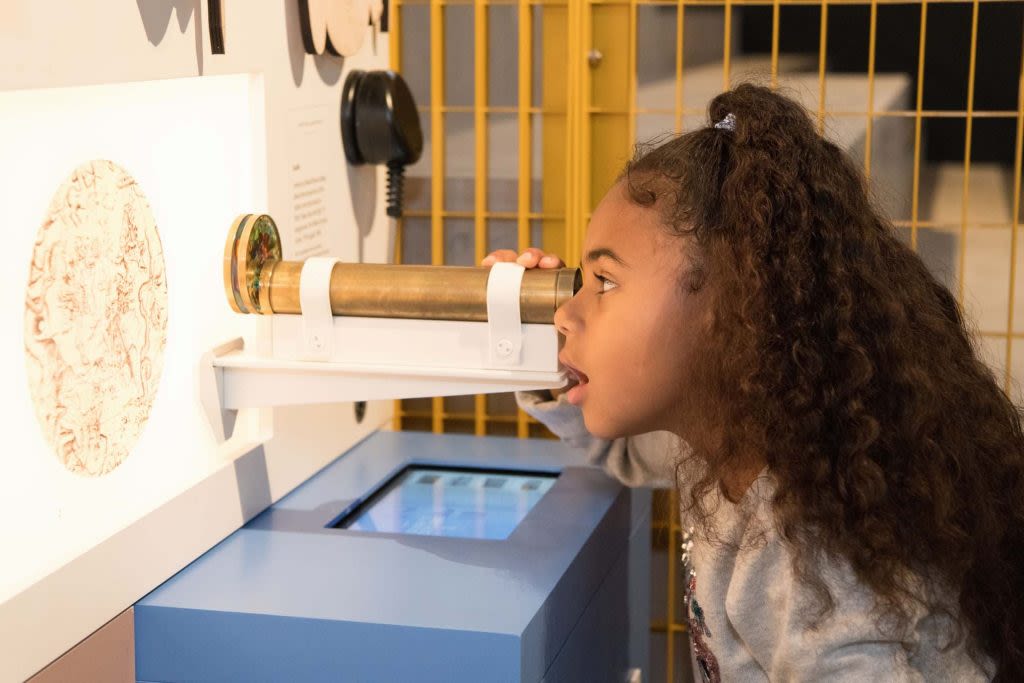Basil Brown: ‘a pure piece of rustic Suffolk’
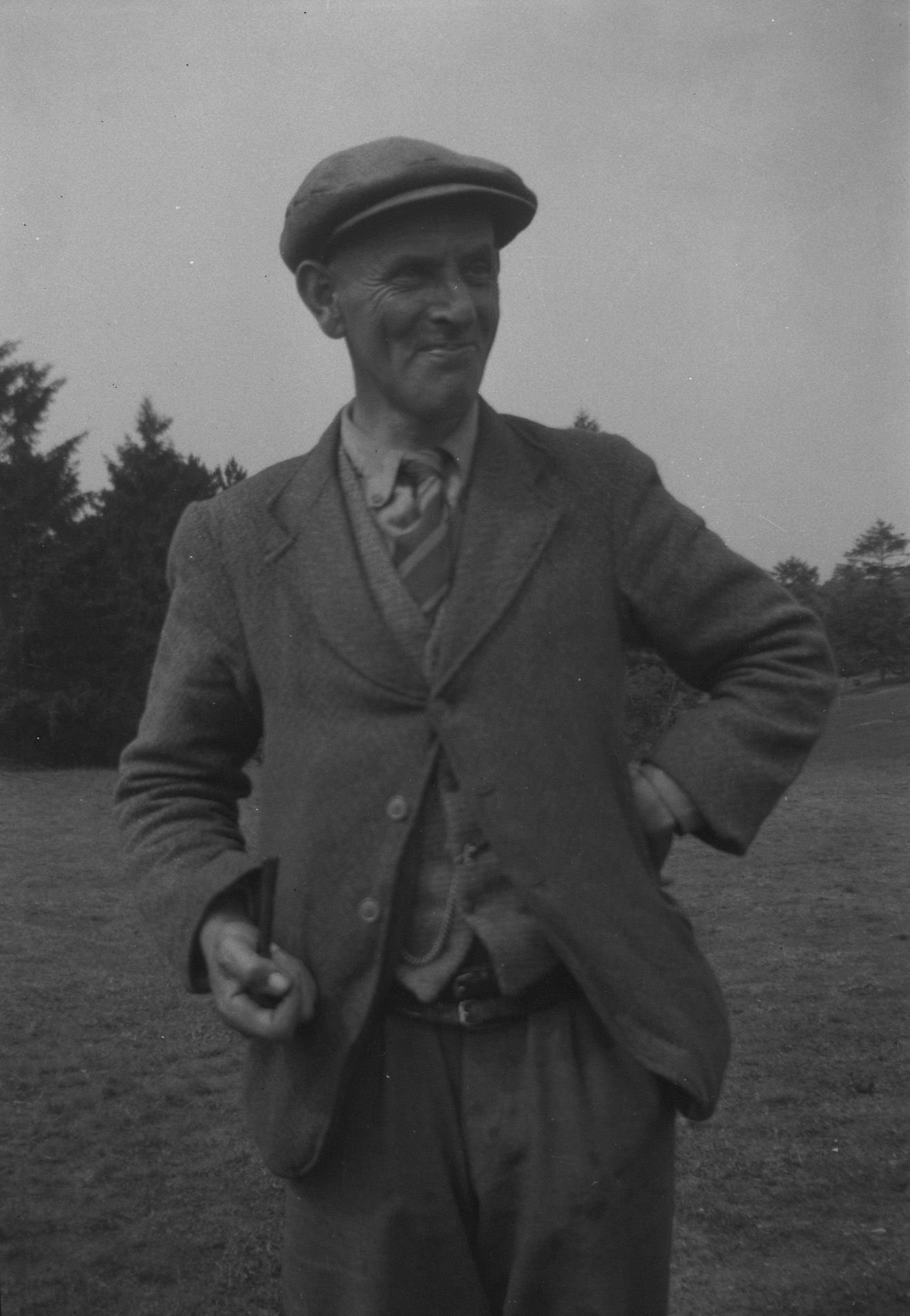
Basil Brown is famous for his career defining discovery of a largely undisturbed Anglo-Saxon Ship burial at Sutton Hoo, Suffolk. Here at Suffolk Archives, you can delve into his personal notebooks, diaries and photographs to discover more about the man behind the treasure.
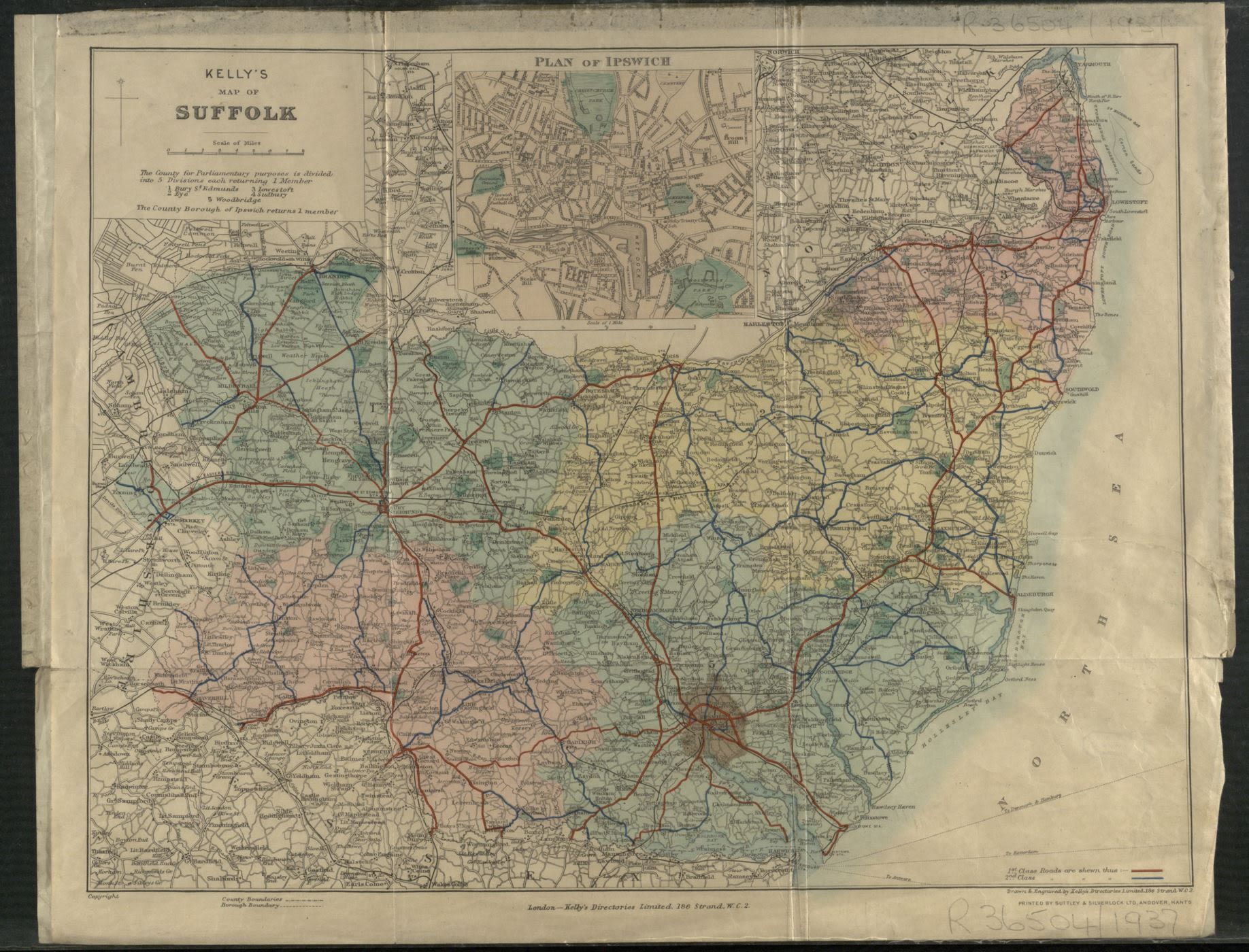
Before Sutton Hoo
Basil was born in 1888, the son of a farming family in Rickinghall, Suffolk. In later life Basil and his wife did take responsibility for the family farm but it was often neglected as Basil was more interested in studying the night sky or excavating the ground beneath his feet.
Often Basil is regarded as an amateur archaeologist due to being self-taught. His archaeological career is recorded in detail in his personal notebooks held at Suffolk Archives, including his breakthrough dig at Calke Wood, near Rickinghall and famous excavation at Sutton Hoo.
Basil’s excavations at Calke Wood began in 1934. At Calke Wood, Basil discovered a second century Romano British urn and Roman kilns for making pottery. He also unearthed a Beaker Shaft (shown on the left); in his drawing he carefully details the different layers of soil. This knowledge and attention to detail would serve him well when he was working at Sutton Hoo. So dedicated was Basil to his work that his excavations at Calke Wood even continued on Christmas Day.
His work at Calke Wood caught the attention of Ipswich Museum who then employed him until his retirement in 1961.
For the beady eyed amongst you, you may have noticed the date on the page of Basil’s notes is 1954. It was a site he often returned to excavate and record in detail.
In 1938 Basil Brown was released from his employment from Ipswich Museum to work for local landowner Edith Pretty. Basil’s Ipswich Museum colleague, Guy Maynard, recommended him for the task of excavating the mysterious mounds on Mrs Pretty’s estate at Sutton Hoo.
During his first investigations on the site Basil discovered a badly disturbed ship burial which had succumbed to rabbits and looters. In 1939 Basil returned to Sutton Hoo, and with a team of estate workers began to scrape back the layers of grass and sand. As they did so, rusty rivets came into view for the first time in over 1000 years.
Within Basil’s notes are details about the Sutton Hoo excavation. The content ranges from field sketches/watercolours to technical drawings to written observations. In the page above from one of his notebooks, Basil notes observations of the composition of the soil. It was his knowledge of local soils which allowed him to trace the 3D ship imprint and create the ghostly outline of the now-famous Anglo-Saxon burial ship.
When it became clear that Sutton Hoo was a site of huge significance, the excavation was taken over by Cambridge archaeologist Charles Phillips. Basil was still employed by Edith Pretty to work on the excavation alongside Charles Phillips’s team. As Phillips’s team carefully unearthed the burial treasure, Basil was set to work on continuing to uncover the rest of the ship imprint. Some have wrongly presumed that Basil and Phillips did not get on due to a perceived rivalry, however, they became lifelong friends and colleagues. In Phillips’s book My Life in Archaeology he affectionally calls Basil ‘a pure piece of rustic Suffolk’.
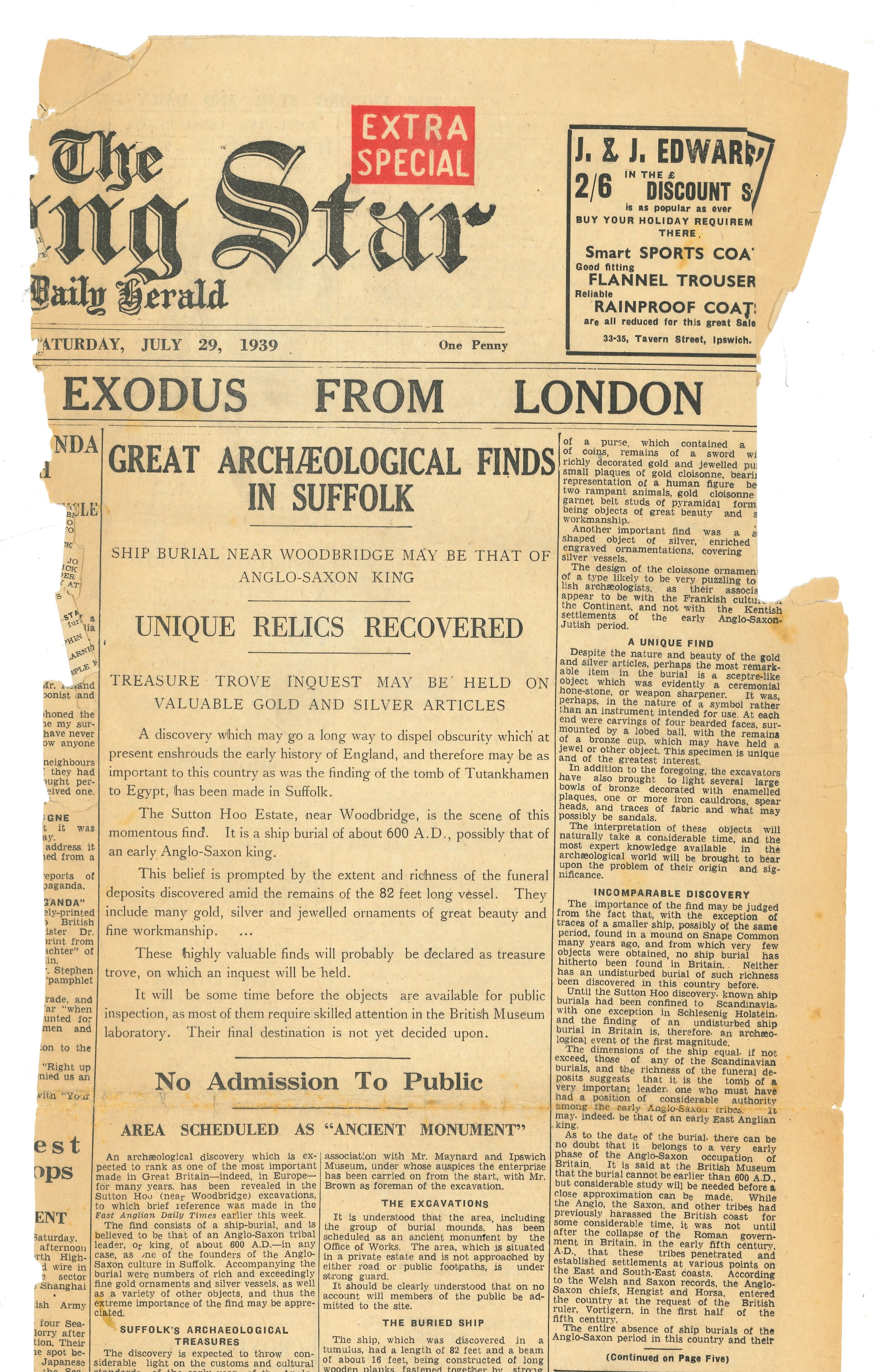
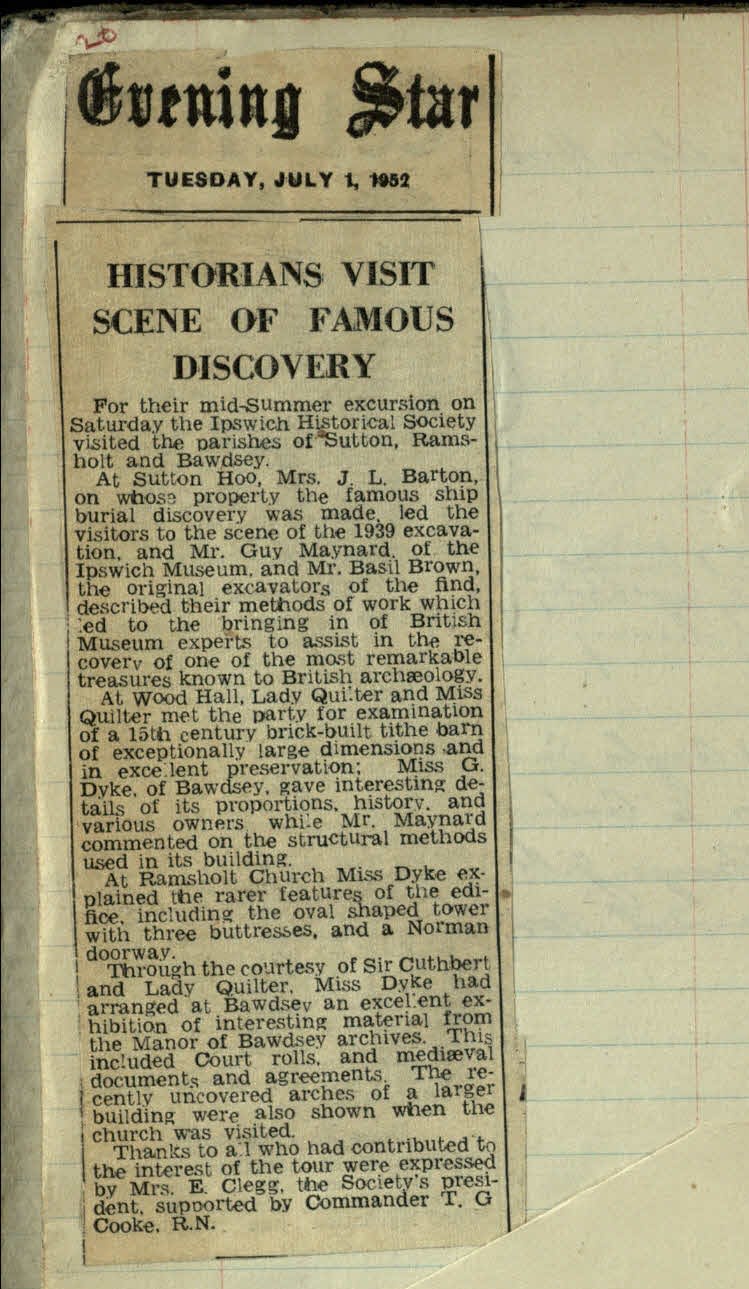
Newspaper cutting from the Evening Star in one of Basil Brown’s notebook about Basil giving tours of the Anglo-Saxon burial ground at Sutton Hoo. IRO/HD3096/1/7 Page 20 (IPSMG: R.1977.40 Colchester and Ipswich Museums Service: Ipswich Borough Council Collection)
Newspaper cutting from the Evening Star in one of Basil Brown’s notebook about Basil giving tours of the Anglo-Saxon burial ground at Sutton Hoo. IRO/HD3096/1/7 Page 20 (IPSMG: R.1977.40 Colchester and Ipswich Museums Service: Ipswich Borough Council Collection)
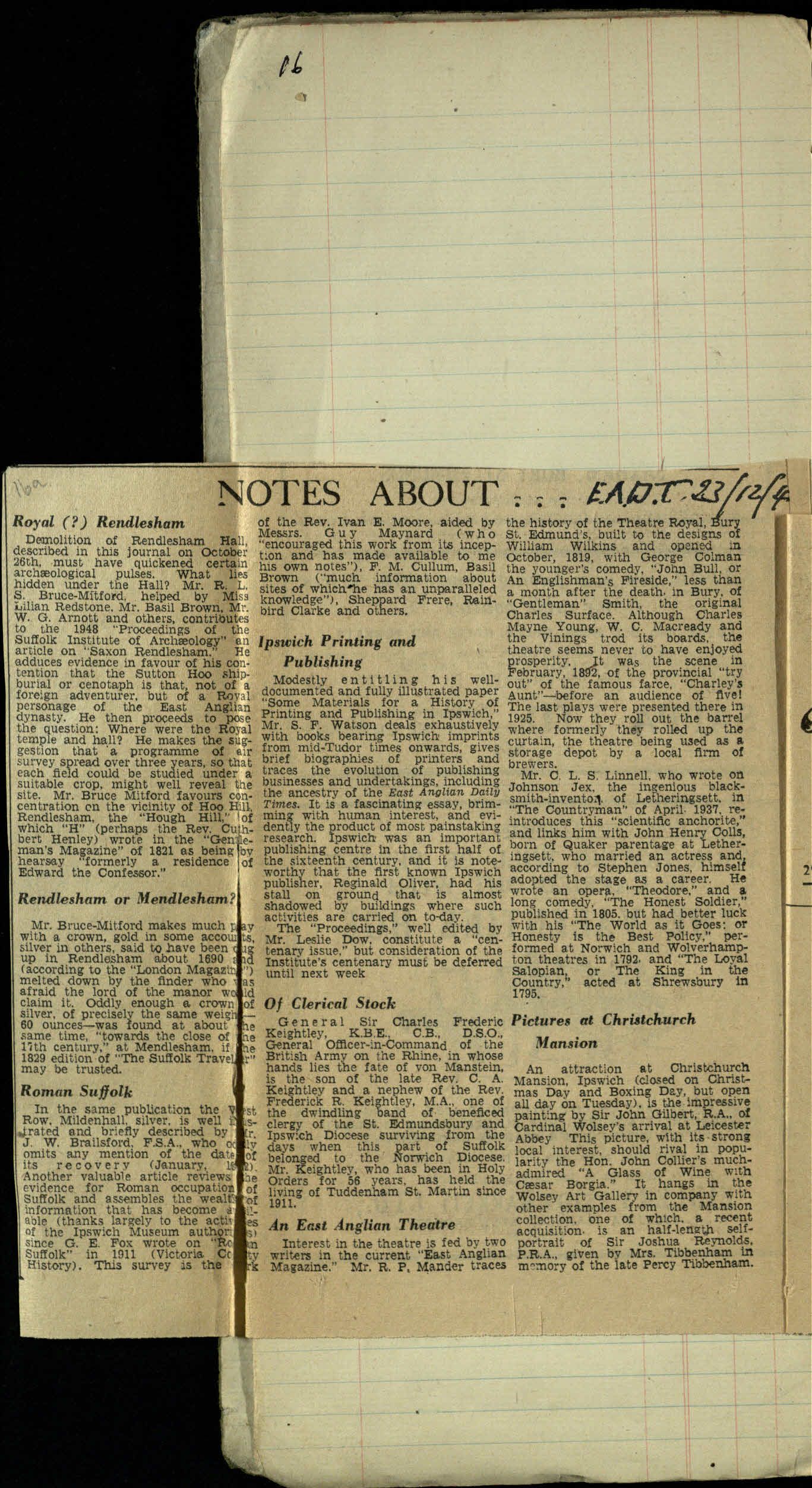
Newspaper cutting saved from the East Anglian Daily Times by Basil Brown in his notebook about his theory of Anglo-Saxon royalty residing at Rendlesham, Suffolk. IRO/HD3096/1/7 Page 16a (IPSMG: R.1977.40 Colchester and Ipswich Museums Service: Ipswich Borough Council Collection)
Newspaper cutting saved from the East Anglian Daily Times by Basil Brown in his notebook about his theory of Anglo-Saxon royalty residing at Rendlesham, Suffolk. IRO/HD3096/1/7 Page 16a (IPSMG: R.1977.40 Colchester and Ipswich Museums Service: Ipswich Borough Council Collection)
Exploring the Basil Brown Collection
Being able to delve into Basil’s notes and drawings of the Sutton Hoo dig not only gives you an insight into the archaeology without having to get your hands dirty, but it also gives you an understanding of the man behind the trowel.
Basil was passionate about passing on his knowledge to those around him. He regularly allowed children to join him on digs, giving them small tasks to undertake. Basil also gave tours of the burial ground for groups of interested adults. These tours and excavations must have been a source of pride for Basil for him as he kept a record of them through newspaper cuttings and photographs.
The Basil Brown Collection at Suffolk Archives contains diaries, notebooks, and photograph albums. The mix of field sketches, notes, newspaper clippings and photographs give a vivid picture of the context of Basil’s digs. His career can be tracked from exploring sites of recently demolished houses to developing ideas around the origins of an Anglo-Saxon royal settlement at Rendlesham. (This theory is currently being explored by Suffolk County Council Archaeological Service through their Rendlesham Revealed project).
If you wish to take a look at the Basil Brown Collection, please be aware that the documents are incredibly fragile. Therefore, Basil’s notebooks are available only through digital copies which can be seen in branch.
Basil also features in our Reveal Wall at The Hold in Ipswich. Come and find out more about his life and discoveries and listen to interviews with the man himself.
